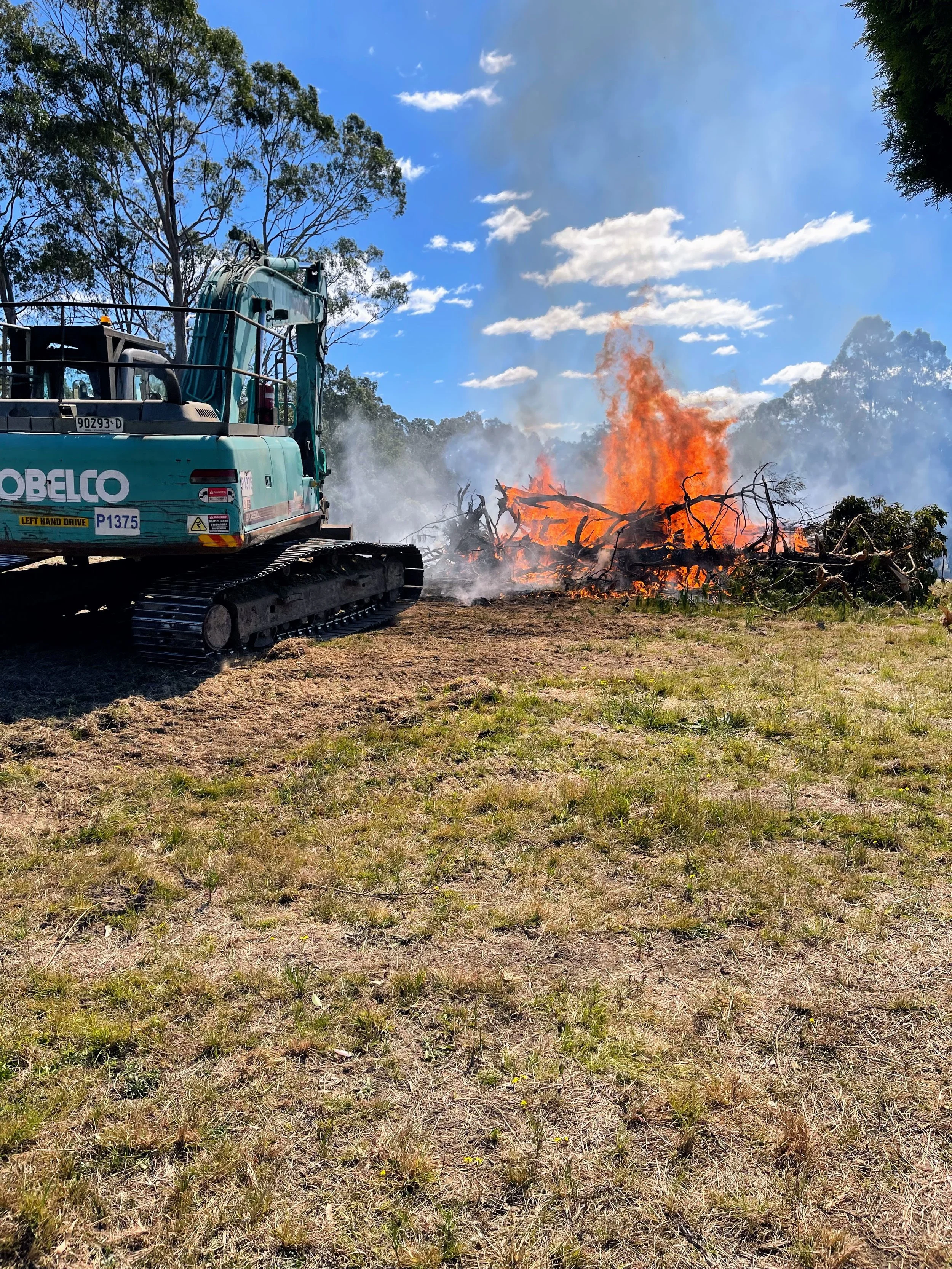Fire Safety - time to start now before Summer hits.
Safety in Clearing: How to Burn Off Safely in Australia and Using Heavy Machinery for Fence Line/Block Clearing
Managing properties in rural Australia comes with its set of challenges—one of the most significant being the need to clear land and maintain fence lines.
When done correctly, burning off and using heavy machinery can be effective methods for land management.
But safety is paramount.
Here’s your comprehensive guide to ensuring that you conduct these activities safely and responsibly.
1. Obtain Necessary Permits and Adhere to Regulations
Before you strike that match or start your machinery, ensure you have all the necessary permits. In Australia, permits are required for burning off.
Fire permit time or not, you must inform the Rural Fire Service (RFS) and your neighbours at least 24 hours in advance.
You can complete the RFS notification online, making the process straightforward and hassle-free see https://www.rfs.nsw.gov.au/fire-information/BFDP.
2. Best Practices for Fire Preparation
Preparation is key to safe burning off. Here are some best practices to follow:
Create Firebreaks: Establish firebreaks by clearing vegetation at least 3 meters wide around the area you plan to burn.
Water the Area: Ensure the ground and surrounding vegetation are well-watered to prevent the fire from spreading unexpectedly.
Remove Flammables: Clear away any flammable materials or debris that could fuel the fire.
RFS Guidelines : Check out their handy tool online at https://www.rfs.nsw.gov.au/plan-and-prepare/1050-vegetation-clearing/tool. It’s good practice to check what you’re allowed to do!
3. Assess Weather Conditions
Choosing the right day for burning is crucial. Always check the weather forecast and aim for a day with mild, stable conditions.
Avoid burning on windy days, as this significantly increases the risk of the fire spreading.
Humidity levels should also be taken into account—lower humidity can cause fires to burn more intensely. And it goes to stand, higher air temperatures make burning off a definite no-no!
4. Personal Protective Equipment and Fire Safety Plans
Safety first! Equip yourself with appropriate personal protective equipment (PPE), such as fire-resistant clothing, gloves, and eye protection. Also, have a comprehensive fire safety plan in place. This should include:
Check the online tool for clearing THAT DAY, print it off and keep it handy, see https://www.rfs.nsw.gov.au/plan-and-prepare/1050-vegetation-clearing/tool.
Fire Extinguishers, Beaters and Hoses: Have enough fire extinguishers and long hoses readily available. Ask your neighbours for help too, if it’s a boundary issue or you both have some clearing to do.
Tractors with water tanks are always a useful tool to have!
Emergency Contacts: Keep a list of emergency contacts, including your local fire brigade.
Escape Routes: Plan and clear escape routes in case the fire gets out of control.
Keep burn piles manageable.
5. Safely Using Heavy Machinery
When using heavy machinery to clear fence lines, or around your property, follow these safety guidelines:
Regular Maintenance: Ensure all machinery is well-maintained and inspected regularly to avoid malfunctions.
Operator Training: Only trained and experienced operators should handle heavy machinery, especially in this situation. Or invest in proper training if needed.
Safety Gear: Operators should wear PPE, including helmets, gloves, and high-visibility clothing.
6. Advantages of Professional Advice
For larger-scale clearing projects, consider seeking professional advice and assistance.
Experts can provide valuable insights and might even manage the entire project for you, ensuring it’s done safely and efficiently.
7. Environmental Considerations
While burning off and clearing land, keep environmental impacts in mind:
Minimize Impact on Flora: Aim to preserve local flora and fauna as much as possible. Only clear what’s necessary.
Erosion Control: Consider the risk of soil erosion. Implement measures to prevent this, such as planting grass or using mulch.
Conclusion
Clearing fence lines and burning off can be done safely and effectively if you adhere to best practices and regulations. Remember to obtain the necessary permits, prepare thoroughly, assess weather conditions, use the right PPE, and follow safety guidelines when operating heavy machinery. For larger projects, professional advice is invaluable.
Ready to take the next step? Ensure you’re fully prepared and compliant with all RFS regulations.
Engage with your local RFS and neighbours, and don’t hesitate to seek professional assistance to make your clearing project a success.
Stay safe, stay informed, and keep your property well-maintained!
By following these guidelines, you’ll not only protect yourself and your property but also contribute to a safer, more responsible approach to land management in rural Australia.
Happy clearing!
